
How Can You Choose the Right Dog Brush with Furgo?
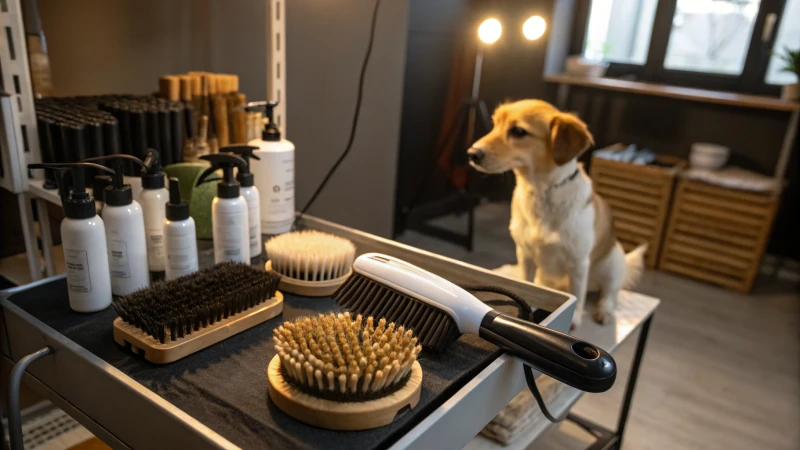
Ever watched your dog basking in the sun, their fur shimmering like a mini superstar?
Picking the right dog brush is all about knowing your furry friend's coat type and finding a tool that suits it. The Furgo Steam Brush stands out with its adaptability, handling various coat types while reducing tangles and static, making it a top choice for pet owners.
I remember when I first brought my dog home, a fluffy ball of energy with fur that seemed to have a mind of its own. Choosing the right brush felt daunting until I discovered the nuances of different coat types. It’s not just about looking good; proper grooming keeps their skin healthy and builds our bond. Let's explore the world of dog brushes and see how Furgo’s tools can turn this task into a joyful experience. From slicker brushes for those adorable curls to bristle brushes for short, sleek coats, there’s a perfect match out there for every pup—and the Furgo Steam Brush might just be it.
The Furgo Steam Brush is suitable for all dog coat types.True
The Furgo Steam Brush is designed to cater to various coat types.
Furgo brushes increase static in your dog's coat.False
Furgo brushes minimize tangles and static, enhancing grooming.
How can the Furgo Steam Brush transform your pet grooming experience?
Ever felt like pet grooming is more of a wrestling match than a bonding moment?
The Furgo Steam Brush transforms grooming by detangling fur, reducing shedding, and enhancing coat shine using steam technology. It eliminates tangles and static, making it perfect for all breeds.
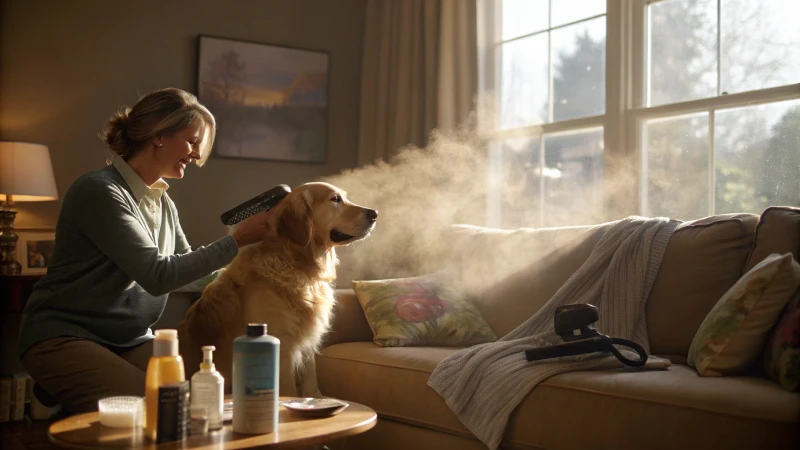
Enhanced Grooming Efficiency
Picture this: my Golden Retriever's coat, usually a stubborn mat of tangles, suddenly becomes manageable. That's the magic of the Furgo Steam Brush. Its steam technology cuts through knots like butter1, making grooming sessions quicker and more efficient. If you've ever had a long-haired breed, you know the struggle is real!
Healthier Coats
I remember the first time I noticed a natural shine on my dog's coat after using the Furgo Steam Brush regularly. It's like a spa day for pets! The anti-static properties not only reduce frizz but also help in spreading natural oils throughout the coat. This is especially a blessing for those furry friends with coarser fur who deserve to strut with pride.
Versatility Across Breeds
Whether you're pampering a petite Beagle or wrangling a fluffy Golden Retriever, this brush adapts to their needs. The adjustable steam settings let you customize each session, ensuring every pooch gets the care they deserve.
Pet Comfort and Stress Reduction
Grooming used to be a high-stress ordeal for my dog. But with the Furgo Steam Brush’s low-noise design, I noticed a significant decrease in his anxiety levels. Now, instead of running away at the sight of a brush, he almost seems to enjoy our grooming sessions.
| Feature | Benefit |
|---|---|
| Steam Technology | Cuts through knots and reduces static |
| Anti-Static Design | Promotes smooth and shiny coats |
| Versatile Settings | Suitable for different coat types |
| Low-Noise Operation | Ensures a stress-free grooming experience |
By adding the Furgo Steam Brush to my pet care routine, I've simplified grooming while boosting my pet's overall well-being through efficient and gentle care. Explore more about effective grooming tools2 to see how they can benefit your pet’s health and comfort.
Furgo Steam Brush reduces pet grooming time.True
The steam technology effectively reduces tangles, streamlining grooming.
Furgo Steam Brush is unsuitable for short-haired dogs.False
The brush's adjustable settings cater to both short and long-haired breeds.
Which Dog Breeds Benefit Most from Different Brush Types?
Choosing the perfect brush for your furry friend is like picking the right pair of shoes—it makes all the difference in comfort and style.
Different dog breeds thrive with specific brush types designed for their unique coats. Slicker brushes are best for long-haired breeds, while bristle brushes suit short-haired ones. Knowing these differences ensures effective grooming and a healthy coat.
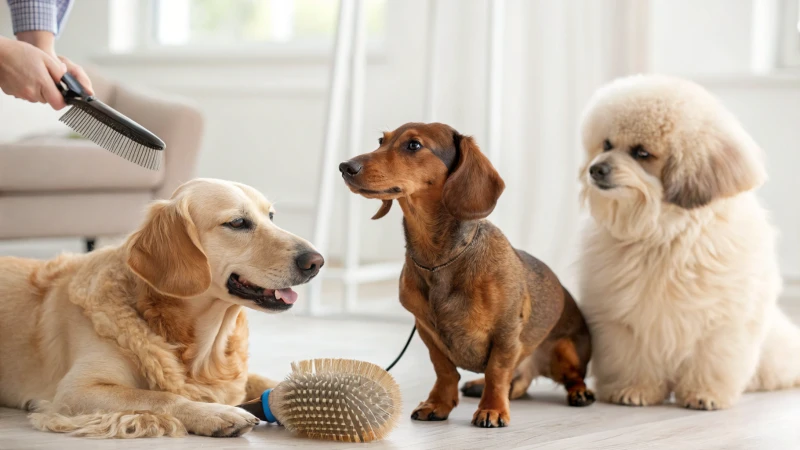
Understanding Coat Types and Brush Compatibility
As a pet owner, I've learned that different dog breeds have distinct coat types, each demanding its own grooming approach. My own experience with my Golden Retriever, Max, taught me that understanding these variations is crucial. Here's a breakdown of how various brushes cater to specific breeds.
| Brush Type | Best for Breeds | Benefits |
|---|---|---|
| Slicker Brush | Golden Retrievers, Poodles | Removes mats, loose fur; ideal for long coats. |
| Bristle Brush | Beagles, Boxers | Promotes shine; removes light debris. |
| Pinhead Brush | Collies, Afghan Hounds | Detangles gently; smoothens coat after grooming. |
| Undercoat Rake | Huskies, German Shepherds | Removes loose undercoat fur; prevents matting. |
Slicker Brushes for Long-Haired Breeds
Slicker brushes have been a lifesaver for my Golden Retriever3. They're perfect for managing his dense and curly coat. Breeds like Poodles also benefit from these brushes because they effectively tackle mats and tangles.
Bristle Brushes for Short-Haired Breeds
For my friend's Beagle, a bristle brush is her go-to. It not only enhances the shine of her dog's coat but also gently removes any debris without causing irritation. Boxers4 also find this type of brush beneficial.
Pinhead Brushes as Finishing Tools
When I babysit my neighbor's Afghan Hound, I often use a pinhead brush after the main grooming session. It leaves the fur sleek and smooth—a must-have tool for long-coated breeds like Collies5.
Undercoat Rakes for Double-Coated Breeds
Handling a Husky's thick double coat can be daunting, but an undercoat rake does wonders. My cousin swears by it for her German Shepherd6 to keep mats at bay and maintain a healthy coat.
Factors Influencing Brush Choice
While choosing a brush, I always consider factors such as size, ergonomic design, and self-cleaning features. Trust me, an ergonomic handle can transform a tiresome grooming session into pleasant bonding time with your dog. Plus, self-cleaning features are a godsend, keeping your tools in top shape without much hassle.
Explore more on how these factors play a role in grooming here7.
Slicker brushes are ideal for short-haired breeds.False
Slicker brushes are best for long-haired breeds like Poodles and Golden Retrievers.
Undercoat rakes prevent matting in double-coated breeds.True
Undercoat rakes remove loose undercoat fur, preventing mats in breeds like Huskies.
How Does Grooming Improve Your Dog's Health and Bonding?
Ever noticed how your dog lights up after a good grooming session? It's more than just looking good—it's about feeling great and bonding closer together.
Grooming boosts your dog's health by preventing skin issues, improving circulation, and reducing shedding. Plus, it's a bonding experience that builds trust and understanding between you and your furry friend.
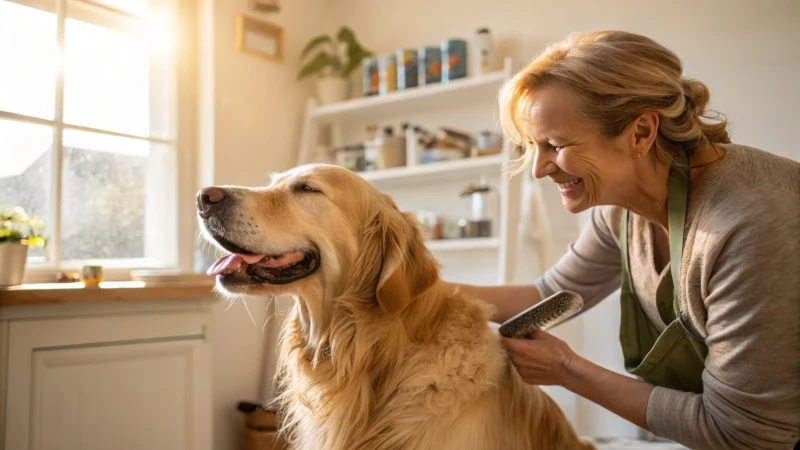
I remember the first time I decided to groom my dog myself. With a brush in hand and a slightly skeptical pooch at my feet, I realized grooming was a whole new world of pet care that went beyond aesthetics.
Physical Health Benefits of Grooming
In those early grooming sessions, I quickly learned that brushing wasn't just for show. It helped remove loose hair and dirt, preventing matting that could irritate my dog's skin. As I brushed, I noticed his coat became shinier, thanks to the stimulation of natural oils—a little like how a good scalp massage works wonders for our hair. This not only made his coat glisten but also seemed to invigorate his whole demeanor, akin to how we feel after a refreshing shower.
| Health Benefit | Description |
|---|---|
| Mat Prevention | Reduces tangles that can cause skin problems |
| Oil Stimulation | Encourages healthy, glossy coat |
| Circulation Boost | Promotes blood flow for healthier skin8 and coat vitality |
Moreover, grooming sessions turned into mini health checks. I was able to spot any odd lumps or cuts early, allowing for prompt veterinary visits. This proactive approach definitely kept us ahead of potential health issues.
Emotional Bonding Through Grooming
Beyond the physical perks, grooming became a bonding ritual. As I gently ran the brush over his back, my dog learned to associate these moments with care and love. It was as if he knew it was our special time. His trust in me deepened with each stroke, and I became more attuned to his subtle signals and preferences.
| Bonding Aspect | How It Helps |
|---|---|
| Trust Building | Reinforces your dog's trust in your care |
| Communication | Improves understanding of your dog's signals |
| Relaxation | Provides a calming effect for both |
These grooming moments taught me more about his personality—what he liked, what he didn't—and brought us closer.
Tips for Effective Grooming
To really make the most of grooming for both health and bonding, here's what worked for me:
- Consistency is Key: Schedule regular times for grooming sessions to maintain a routine your dog can anticipate.
- Use Proper Tools: Choosing the right brush for his coat type made all the difference.
- Create a Calm Environment: Keeping the atmosphere relaxed helped him feel comfortable.
- Be Gentle: Gentle strokes ensured he enjoyed the process without any discomfort.
By integrating these practices into our routine, we transformed our grooming sessions into cherished rituals—enhancing his health and deepening our bond one brush stroke at a time.
Grooming prevents skin irritation in dogs.True
Regular grooming removes loose hair and dirt, preventing matting and skin irritation.
Grooming sessions have no impact on dog-owner bonding.False
Grooming enhances emotional connections by building trust and communication.
What Common Mistakes Should You Avoid When Brushing Your Dog?
Ever tried brushing your dog only to see them run away? Let's talk about making grooming a happy, bonding experience.
To avoid common brushing mistakes with your dog, pick the right brush for their coat, use gentle strokes to prevent irritation, and stick to a regular grooming schedule.
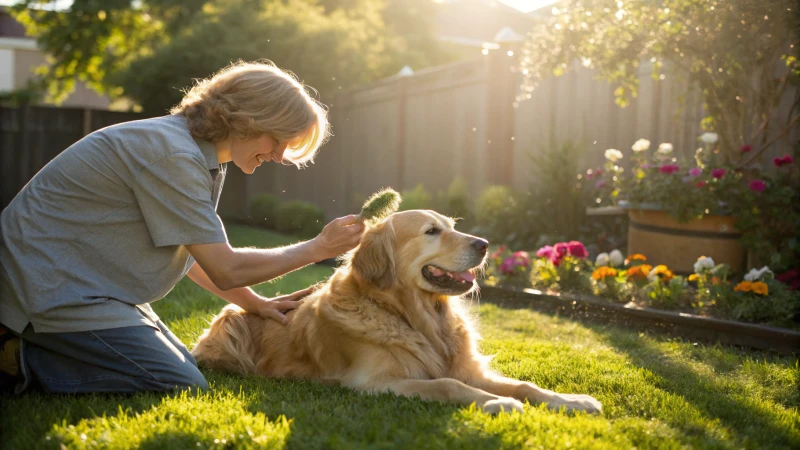
I still remember the first time I attempted to groom my furry buddy, Max. It was a comedy of errors—imagine a tangle of fur that looked like a small nest! That's when I realized how important it was to choose the right brush for his coat type.
Choosing the Wrong Brush
One of the most frequent mistakes is using an unsuitable brush for your dog's coat type. Each breed has unique grooming needs, and choosing the right brush can make all the difference.
- Slicker Brushes: Perfect for long-haired breeds like Golden Retrievers.
- Bristle Brushes: Ideal for our short-haired friends like Beagles.
- Pinhead Brushes: Great for detangling longer coats.
Using the wrong brush can lead to ineffective grooming and potential skin irritation. If you're unsure about which brush to use, take a moment to explore the different types of dog brushes9.
Applying Too Much Pressure
Brushing shouldn't be a battle of wills. Trust me, I've been there—pushing too hard only made Max squirm and try to escape. Brushing too hard can hurt your dog, causing discomfort and potentially damaging their skin. Always use gentle strokes, especially in sensitive areas like the belly and legs. Gentle grooming techniques can be found here10.
Inconsistent Grooming Routine
Consistency is key. Once I established a regular schedule, I noticed that Max's coat was healthier and shed less. Regular brushing is crucial to maintain your dog's coat health and reduce shedding. It's not just about aesthetics; it's about maintaining their health. For more on setting up a routine, check out these best practices for dog grooming11.
Ignoring Signs of Discomfort
Pay attention to your dog's reactions during grooming sessions. Signs of discomfort or distress should not be ignored. I recall a time when Max seemed unusually restless, and it turned out that his skin was irritated from the wrong brush. If your dog shows signs of discomfort, stop immediately to investigate. Learn more about understanding dog behavior12 during grooming sessions.
Here's a quick table summarizing brush types and common mistakes:
| Brush Type | Ideal For | Common Mistake |
|---|---|---|
| Slicker | Long-haired breeds | Too much pressure |
| Bristle | Short-haired breeds | Using wrong coat type |
| Pinhead | Detangling long coats | Infrequent use |
| Rubber | Short coats & massage during baths | Skipping wet use |
Remember, grooming should be an enjoyable time for both you and your dog—it's all about building trust and connection while keeping them healthy.
Slicker brushes are best for short-haired breeds.False
Slicker brushes are ideal for long-haired breeds, not short-haired ones.
Regular brushing helps reduce dog shedding.True
Consistent grooming maintains coat health and reduces shedding effectively.
Conclusion
Choosing the right dog brush, like the versatile Furgo Steam Brush, enhances grooming efficiency, promotes coat health, and strengthens the bond between pets and their owners.
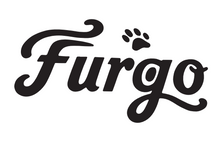


Leave a comment
All comments are moderated before being published.